Abstract
The phase response curve for the circadian rhythm of leaf movement of Coleus blumei x C. frederici, a short day plant, is generally similar to those reported for other organisms. An increase in the duration of the light signal caused an increase in the extreme values of the phase response curve and shortened the time for transition from maximum delays to maximum advances. Experiments with 2 light signals showed that the overt rhythm of leaf movement represents the rhythm of the light sensitive oscillator even during the transient period that followed the first light signal. A temperature decrease of 7° for 8 hr caused only a transient phase shift in the following 2 cycles but not in the steady state. The combination of such a temperature decrease and a light signal showed that only the overt rhythm of leaf movement was disturbed by the temperature decrease whereas the light sensitive oscillator was free running. A temperature decrease of 11° for 10 hr caused a steady state phase shift and affected the light sensitive oscillator as well.
Full text
PDF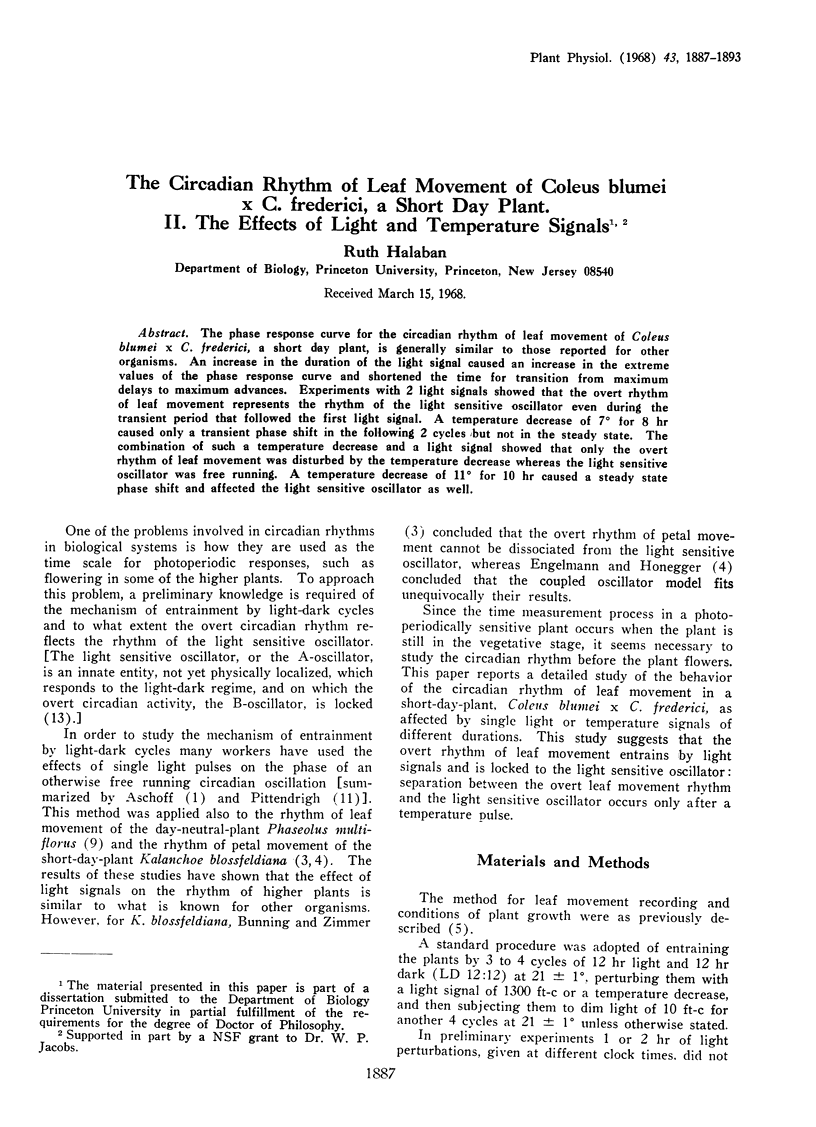
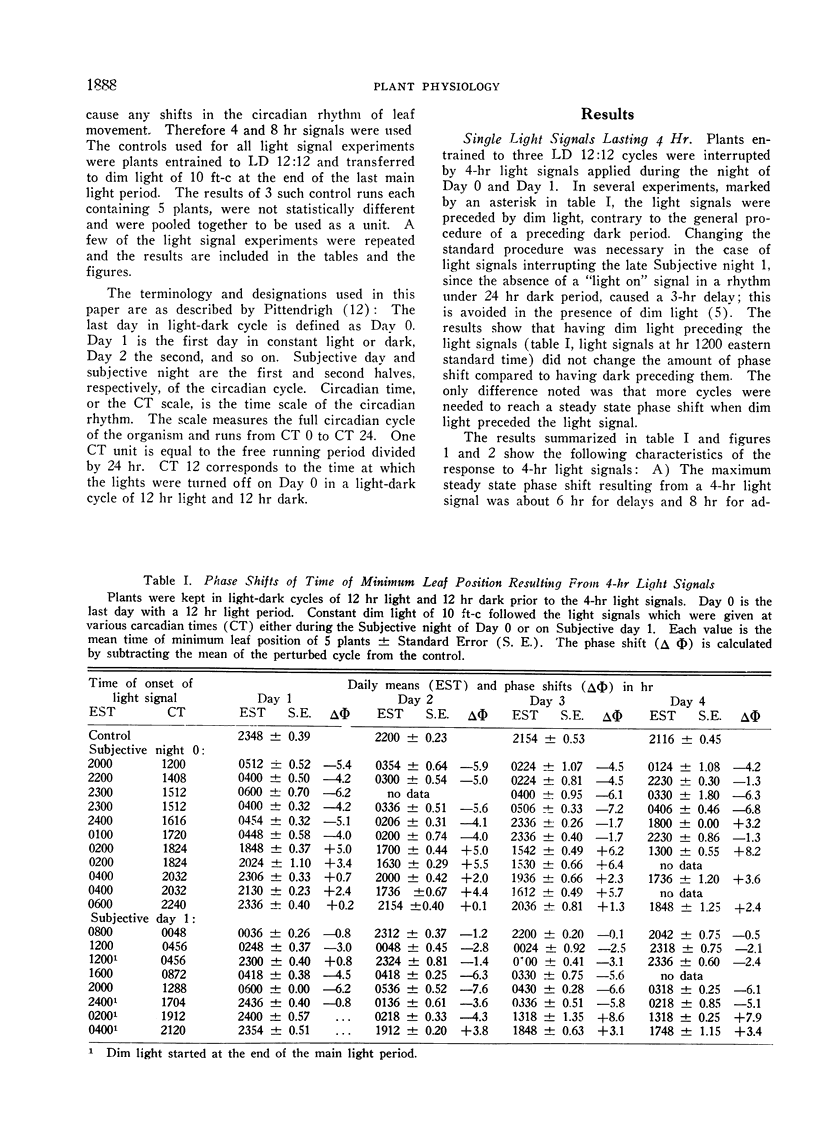
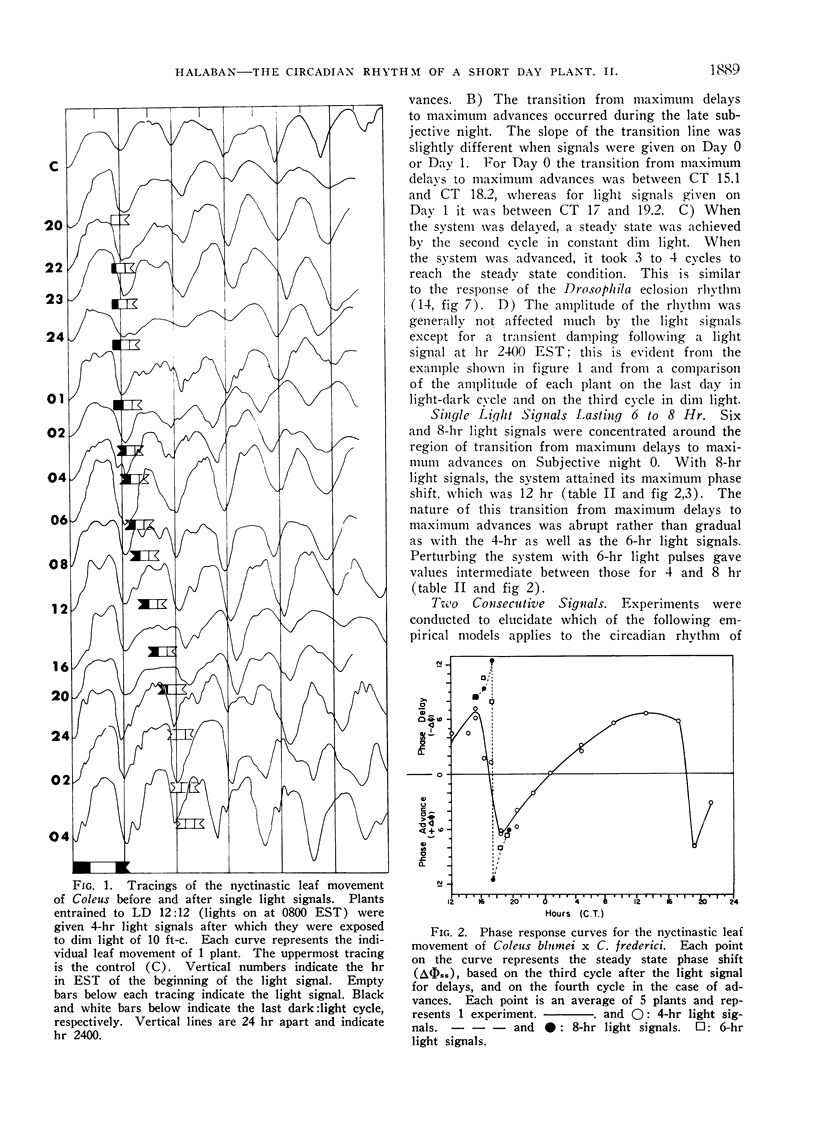
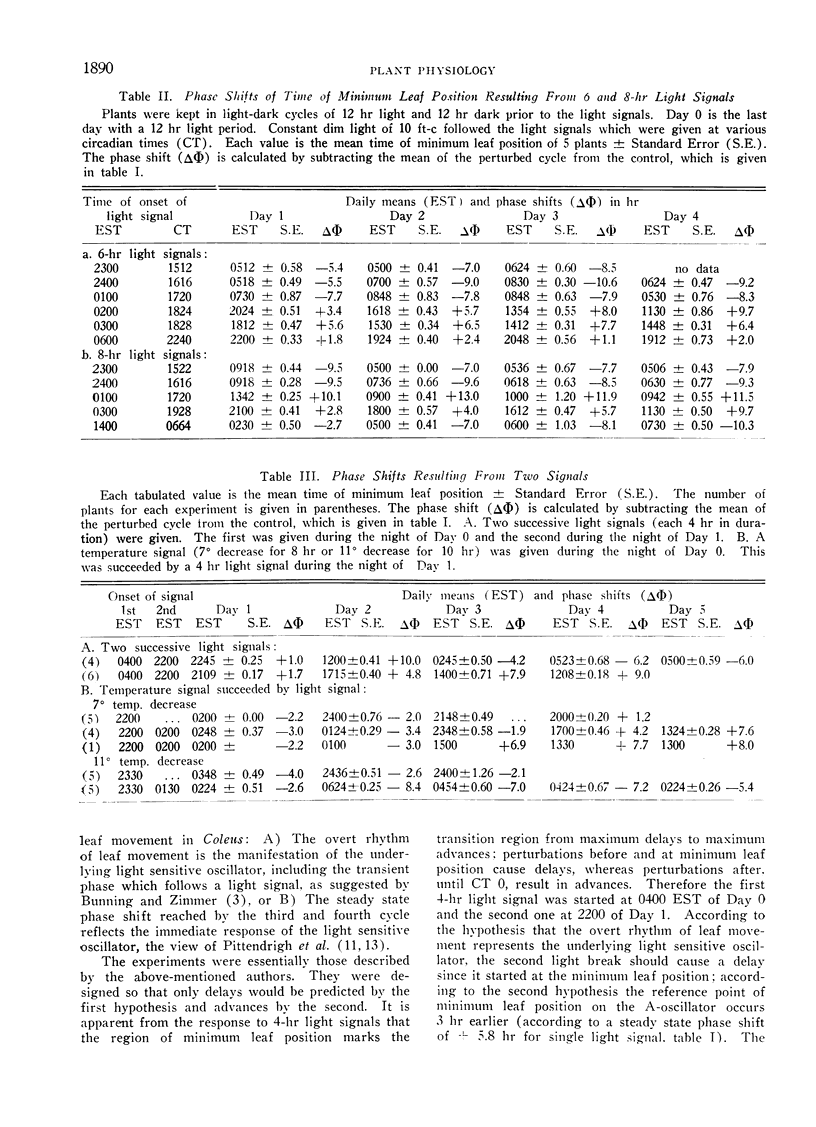
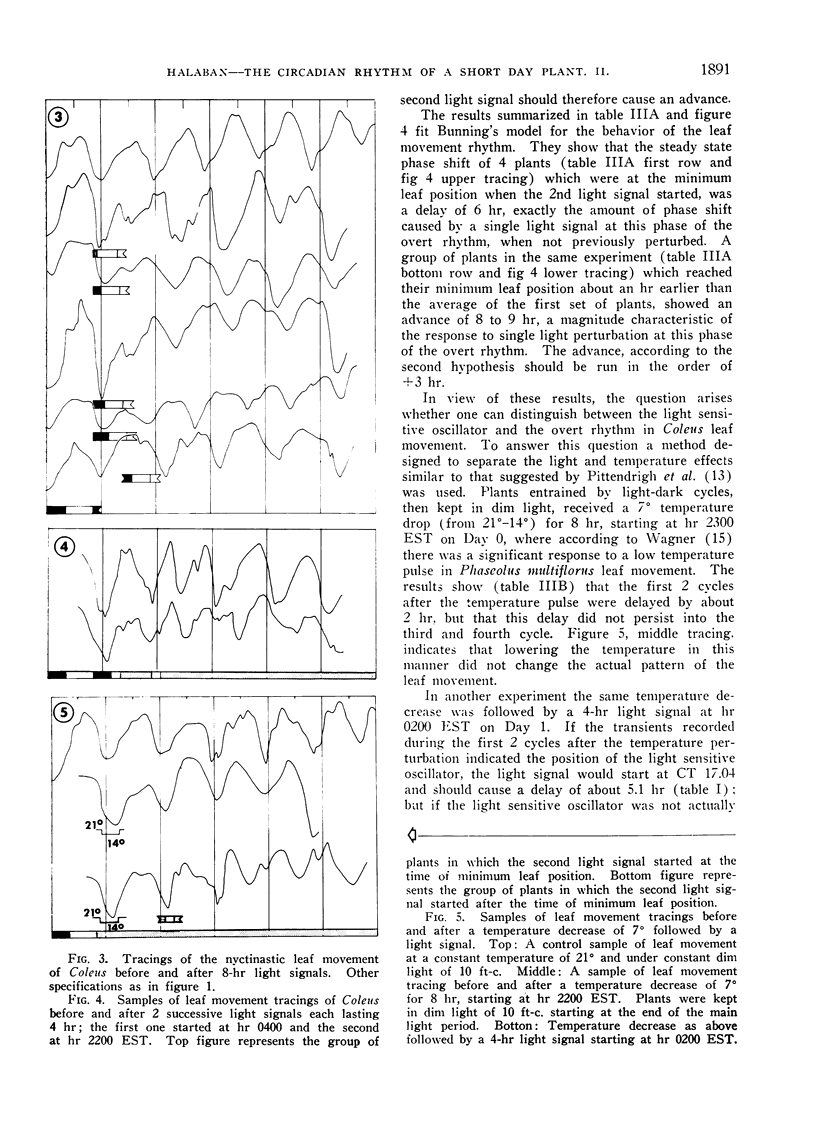
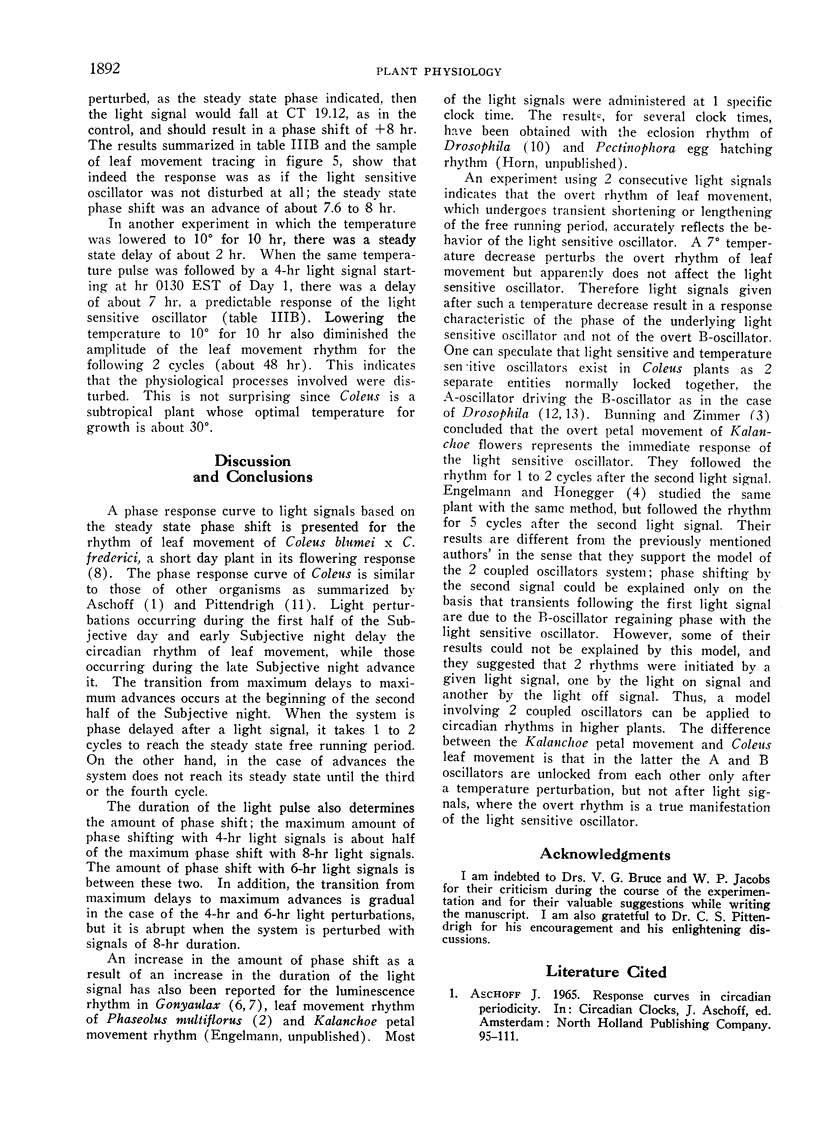
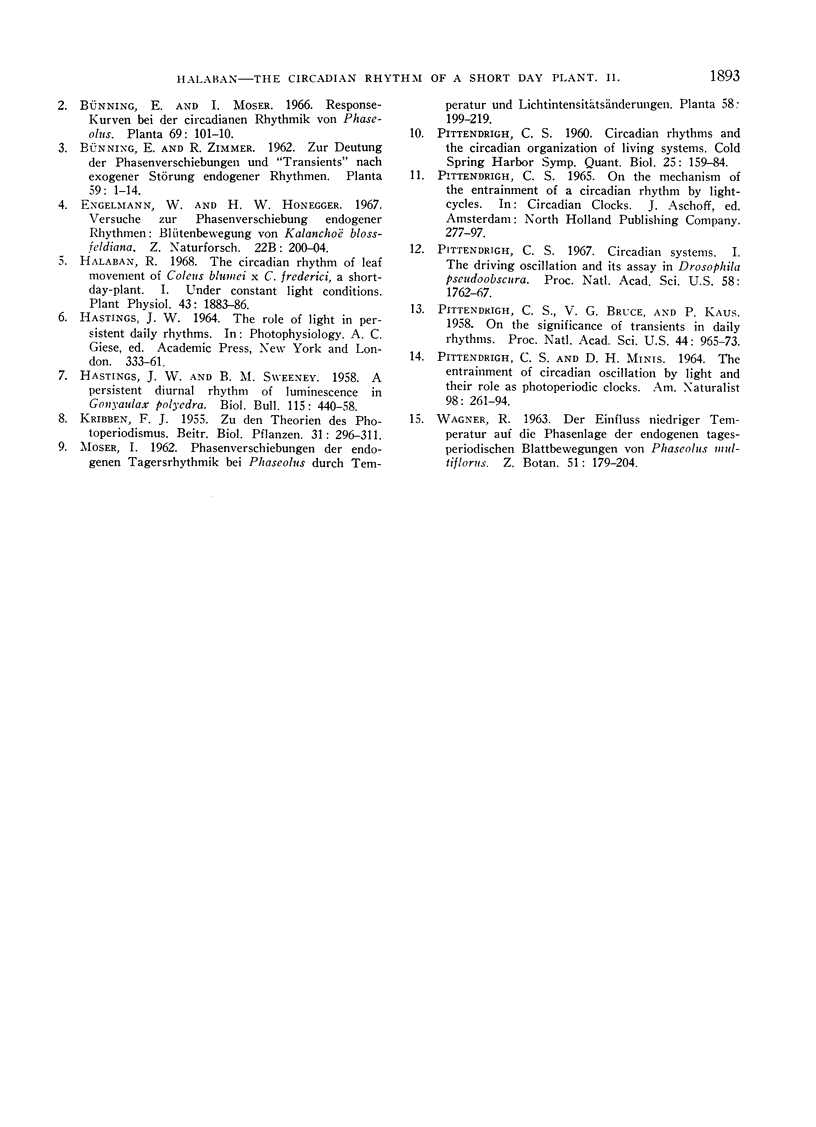
Selected References
These references are in PubMed. This may not be the complete list of references from this article.
- Halaban R. The Circadian Rhythm of Leaf Movement of Coleus blumei x C. frederici, a Short Day Plant. I. Under Constant Light Conditions. Plant Physiol. 1968 Dec;43(12):1883–1886. doi: 10.1104/pp.43.12.1883. [DOI] [PMC free article] [PubMed] [Google Scholar]
- PITTENDRIGH C. S. Circadian rhythms and the circadian organization of living systems. Cold Spring Harb Symp Quant Biol. 1960;25:159–184. doi: 10.1101/sqb.1960.025.01.015. [DOI] [PubMed] [Google Scholar]
- Pittendrigh C. S. Circadian systems. I. The driving oscillation and its assay in Drosophila pseudoobscura. Proc Natl Acad Sci U S A. 1967 Oct;58(4):1762–1767. doi: 10.1073/pnas.58.4.1762. [DOI] [PMC free article] [PubMed] [Google Scholar]
- Pittendrigh C., Bruce V., Kaus P. ON THE SIGNIFICANCE OF TRANSIENTS IN DAILY RHYTHMS. Proc Natl Acad Sci U S A. 1958 Sep 15;44(9):965–973. doi: 10.1073/pnas.44.9.965. [DOI] [PMC free article] [PubMed] [Google Scholar]


